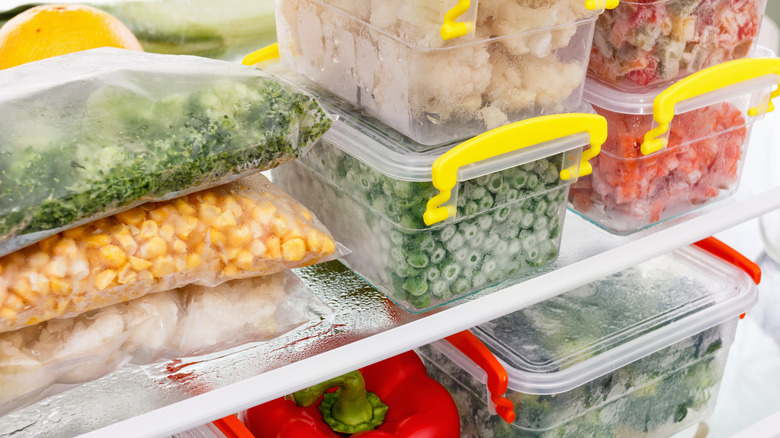How To Thaw Chicken Quickly And Safely (Without Using The Microwave)
We may receive a commission on purchases made from links.
Americans love eating chicken — a lot. The average person living in the U.S. will consume approximately 100 pounds of chicken per year, and it's a number that's continuing to rise.
Chicken is a versatile source of protein that's easy to prepare and stores well in the freezer, and therein lies the problem. While freezing chicken might be easy, defrosting it is a delicate balancing act to ensure it's both safe and palatable to eat.
Though stowing frozen chicken overnight in your refrigerator is by far the best method, sometimes we forget to take it out the night before and when dinner time rolls around, there's a frantic scramble to defrost. Using a microwave may only take a few minutes, but unfortunately, it compromises the quality, flavor, odor, and texture.
Although there are several FDA-accepted ways to thaw frozen chicken, using cold water is a quick, safe method that doesn't require a microwave. It takes about an hour, with two to three water changes to maintain a safe temperature of 40 degrees Fahrenheit or below. This is by far the safest way to thaw chicken quickly without sacrificing quality.
It's also a good idea to keep a thermometer handy to check the temperature of the water as the chicken thaws. If it rises above 40 degrees Fahrenheit, pop it back into the refrigerator until the temperature is back in the safe zone.
Preparing chicken for the freezer
Although it will always defrost chicken safely, the cold water method will be faster and more effective if the meat is prepared and packaged before freezing. Start by removing the chicken from its original packaging (do not rinse raw chicken) and store individual pieces in freezer-safe bags, removing any excess air using a vacuum sealer. Furthermore, you can pre-prep the chicken before freezing by slicing breasts into cutlets and pounding them out with a meat mallet for uniform thickness — perfect for chicken parmesan or a katsu sando. Using this flat-pack form not only saves space in the freezer, but the frozen chicken will thaw even faster.
While it seems like a lot of fuss over how to properly thaw frozen chicken, salmonella poisoning is no joke, causing symptoms such as diarrhea, fever, and stomach cramps. Unlike beef or seafood, chicken has a higher risk of bacterial contamination because it contains more moisture, has a lower pH, and is processed by a method (cutting it up with the skin-on) that can push bacteria throughout the meat. When it comes to food preparation for you and your family, it's better to be safe than sorry.

